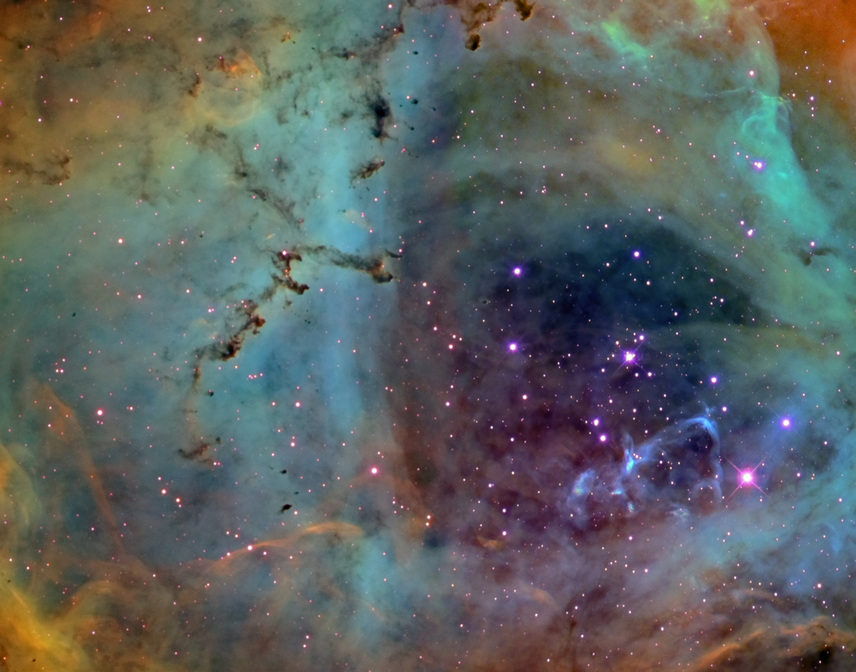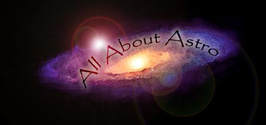NGC 2244 - The Rosette Nebula - Monoceros - Hubble Colors
"When Roses Aren't Red" - Hubble (HST) Color Palette - Spectral Band Image
Red = SII, Green = Ha, Blue = OIII - 2 frame Mosaic
Red = SII, Green = Ha, Blue = OIII - 2 frame Mosaic
|
Location: Ballauer Observatory near Azle, Texas
Date: November, 2005 to January 2006 Seeing: Varied Transparency: Varied Scope/Mount: 12.5" RCOS RC and Paramount ME Camera: SBIG STL-6303e astro CCD camera Filters: Custom Scientific 4.5nm Ha, OIII, and SII spectral line filters. Exposure Info: Mapped color mosaic - SII/Ha/OIII - 90:210:60 minutes for left side and 90:150:90 minutes for right side (20 and 30 minute subexposures unbinned) Processing Information: Calibration, Registration, and DDP in CCDStack. Color mapping, cropping, color balance, levels/curves, sharpening, and noise removal (Astronomy Tools/Pro Digital Software) in Photoshop CS. |
About this Image: No, this isn't a Hubble shot. But this image was acquired and processed just like the gorgeous Hubble telescope images that we've come to love. To accomplish this, the image was taken through specialized, narrowband emission line filters. This information was then "mapped" to the traditional red, green, and blue channels of an RGB image. The greenish portions of the image represent Hydrogen-alpha ionized gases., the bluish color represents doubly ionized Oxygen gases, and the reddish areas represent singly ionized Sulfur gases. While the stars glow heavily in the sulfur wavelength, there is only light concentration of it in the nebula, mostly throughout the brighter portions.
Such images, while obviously beautiful, have a real scientific purpose. Because the colors are mapped specifically to certain gases, it's easy to understand the concentrations of ionizations and how (where) they interact with each other. This image was named NASA's Astronomy Picture of the Day for March 24, 2006...coined, "When Roses Aren't Red." See it <here> on APOD. |

